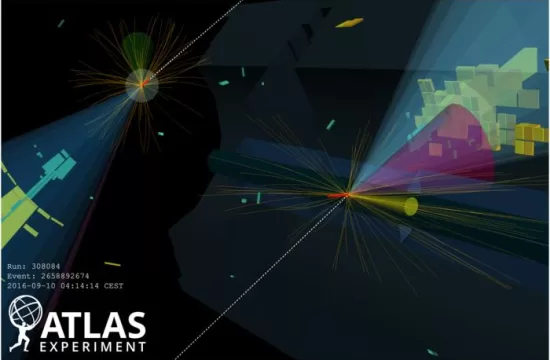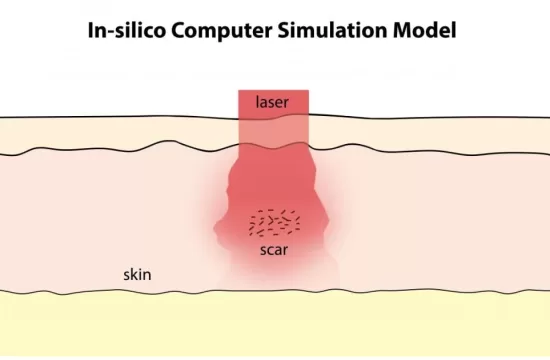CAMBRIDGE, Mass. — Evaporation is happening all around us all the time, from the sweat cooling our bodies to the dew burning off in the morning sun. But science’s understanding of this ubiquitous process may have been missing a piece all this time.
In recent years, some researchers have been puzzled upon finding that water in their experiments, which was held in a sponge-like material known as a hydrogel, was evaporating at a higher rate than could be explained by the amount of heat, or thermal energy, that the water was receiving. And the excess has been significant — a doubling, or even a tripling or more, of the theoretical maximum rate.

After carrying out a series of new experiments and simulations, and reexamining some of the results from various groups that claimed to have exceeded the thermal limit, a team of researchers at MIT has reached a startling conclusion: Under certain conditions, at the interface where water meets air, light can directly bring about evaporation without the need for heat, and it actually does so even more efficiently than heat. In these experiments, the water was held in a hydrogel material, but the researchers suggest that the phenomenon may occur under other conditions as well.
The findings are published this week in a paper in PNAS, by MIT postdoc Yaodong Tu, professor of mechanical engineering Gang Chen, and four others.
The phenomenon might play a role in the formation and evolution of fog and clouds, and thus would be important to incorporate into climate models to improve their accuracy, the researchers say. And it might play an important part in many industrial processes such as solar-powered desalination of water, perhaps enabling alternatives to the step of converting sunlight to heat first.
The new findings come as a surprise because water itself does not absorb light to any significant degree. That’s why you can see clearly through many feet of clean water to the surface below. So, when the team initially began exploring the process of solar evaporation for desalination, they first put particles of a black, light-absorbing material in a container of water to help convert the sunlight to heat.
Then, the team came across the work of another group that had achieved an evaporation rate double the thermal limit — which is the highest possible amount of evaporation that can take place for a given input of heat, based on basic physical principles such as the conservation of energy. It was in these experiments that the water was bound up in a hydrogel. Although they were initially skeptical, Chen and Tu starting their own experiments with hydrogels, including a piece of the material from the other group. “We tested it under our solar simulator, and it worked,” confirming the unusually high evaporation rate, Chen says. “So, we believed them now.” Chen and Tu then began making and testing their own hydrogels.
They began to suspect that the excess evaporation was being caused by the light itself —that photons of light were actually knocking bundles of water molecules loose from the water’s surface. This effect would only take place right at the boundary layer between water and air, at the surface of the hydrogel material — and perhaps also on the sea surface or the surfaces of droplets in clouds or fog.
In the lab, they monitored the surface of a hydrogel, a JELL-O-like matrix consisting mostly of water bound by a sponge-like lattice of thin membranes. They measured its responses to simulated sunlight with precisely controlled wavelengths.
The researchers subjected the water surface to different colors of light in sequence and measured the evaporation rate. They did this by placing a container of water-laden hydrogel on a scale and directly measuring the amount of mass lost to evaporation, as well as monitoring the temperature above the hydrogel surface. The lights were shielded to prevent them from introducing extra heat. The researchers found that the effect varied with color and peaked at a particular wavelength of green light. Such a color dependence has no relation to heat, and so supports the idea that it is the light itself that is causing at least some of the evaporation.
The researchers tried to duplicate the observed evaporation rate with the same setup but using electricity to heat the material, and no light. Even though the thermal input was the same as in the other test, the amount of water that evaporated never exceeded the thermal limit. However, it did so when the simulated sunlight was on, confirming that light was the cause of the extra evaporation.
Though water itself does not absorb much light, and neither does the hydrogel material itself, when the two combine they become strong absorbers, Chen says. That allows the material to harness the energy of the solar photons efficiently and exceed the thermal limit, without the need for any dark dyes for absorption.
Having discovered this effect, which they have dubbed the photomolecular effect, the researchers are now working on how to apply it to real-world needs. They have a grant from the Abdul Latif Jameel Water and Food Systems Lab to study the use of this phenomenon to improve the efficiency of solar-powered desalination systems, and a Bose Grant to explore the phenomenon’s effects on climate change modeling.
Tu explains that in standard desalination processes, “it normally has two steps: First we evaporate the water into vapor, and then we need to condense the vapor to liquify it into fresh water.” With this discovery, he says, potentially “we can achieve high efficiency on the evaporation side.” The process also could turn out to have applications in processes that require drying a material.
Chen says that in principle, he thinks it may be possible to increase the limit of water produced by solar desalination, which is currently 1.5 kilograms per square meter, by as much as three- or fourfold using this light-based approach. “This could potentially really lead to cheap desalination,” he says.
Tu adds that this phenomenon could potentially also be leveraged in evaporative cooling processes, using the phase change to provide a highly efficient solar cooling system.
Meanwhile, the researchers are also working closely with other groups who are attempting to replicate the findings, hoping to overcome skepticism that has faced the unexpected findings and the hypothesis being advanced to explain them.
The research team also included Jiawei Zhou, Shaoting Lin, Mohammed Alshrah, and Xuanhe Zhao, all in MIT’s Department of Mechanical Engineering.







